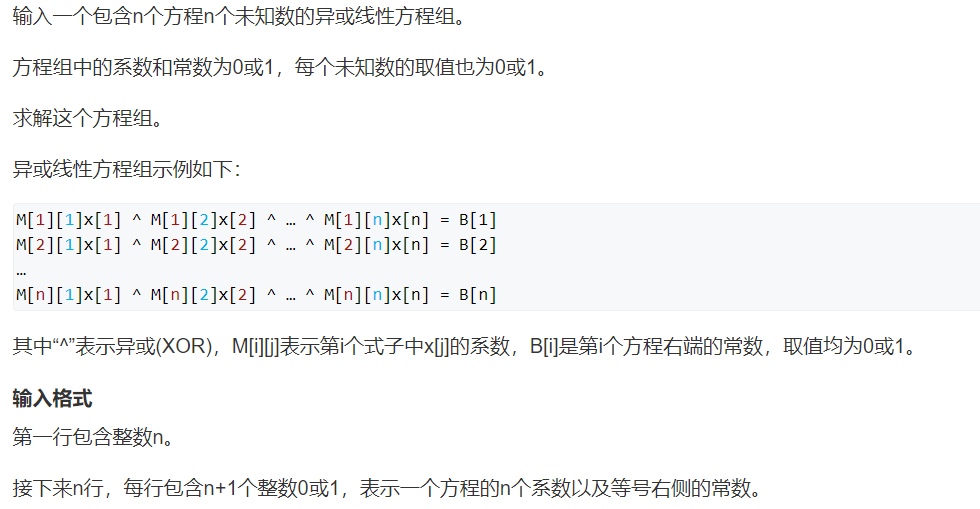
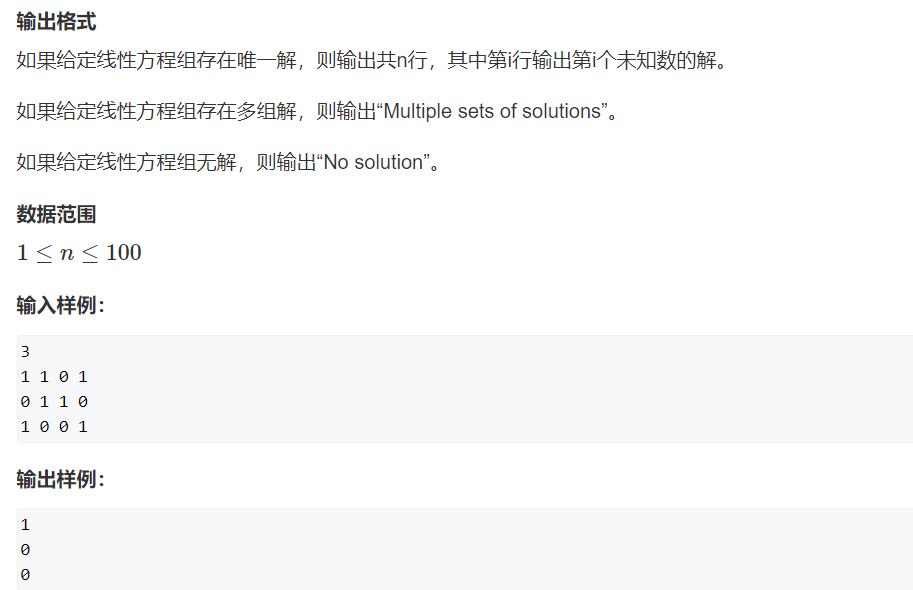
样例解释:
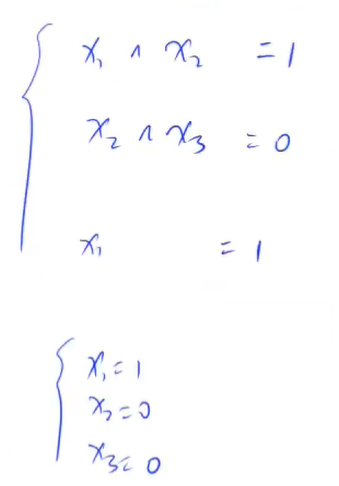
异或又叫不进位加法
思路:
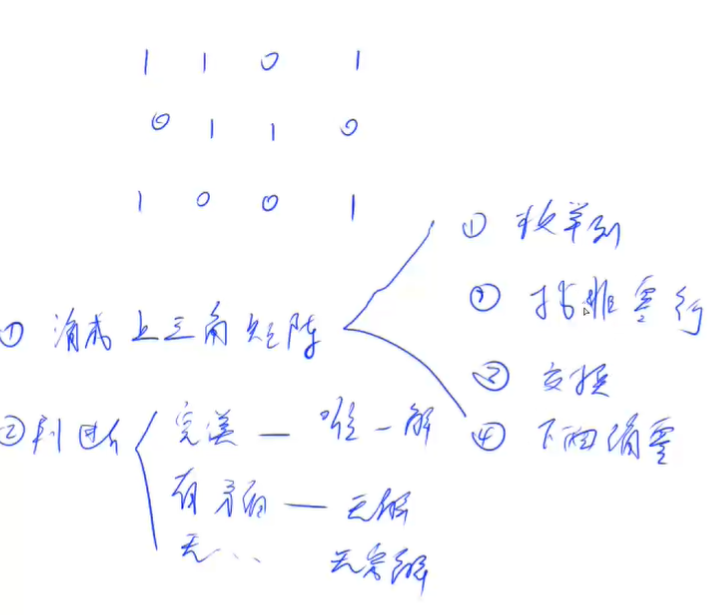
原题样例转换为上三角矩阵后是这样
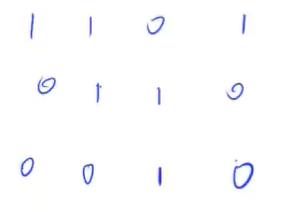
有唯一解
求出唯一解后,反推一遍,就可以求出所有解
异或版的高斯消元,比普通版的高斯消元更容易。为数不多的衍生题比母题简单系列
1 #include <bits/stdc++.h> 2 using namespace std; 3 const int N = 110; 4 int n; 5 int a[N][N]; 6 int gauss() { 7 int c, r; 8 //c表示枚举的每一列 9 //r表示行 10 for (c = 0, r = 0; c < n; c++) { 11 int t = r; 12 for (int i = r; i < n; i++) { 13 if (a[i][c]) { 14 t = i; 15 break; 16 } 17 } 18 if (!a[t][c]) { 19 continue; 20 } 21 for (int i = c; i <= n; i++) { //换到最上面 22 swap(a[t][i], a[r][i]); 23 } 24 for (int i = r + 1; i < n; i++) { //把下面的都变为0 25 if (a[i][c]) { 26 for (int j = n; j >= c; j--) { 27 a[i][j] ^= a[r][j]; 28 } 29 } 30 } 31 r++; 32 } 33 //已经变好了 34 if (r < n) { //如果不到n个方程,不是唯一解 35 for (int i = r; i < n; i++) { 36 if (a[i][n]) { //如果出现了0 = ?的情况 37 return 2; //无解 38 } 39 } 40 return 1; //无穷多解 41 } 42 for (int i = n - 1; i >= 0; i--) { //最后一步,倒着把答案推出来 43 for (int j = i + 1; j < n; j++) { 44 a[i][n] ^= a[i][j] * a[j][n]; //*可以写成& 45 } 46 } 47 return 0; //唯一解 48 } 49 int main() { 50 cin >> n; 51 for (int i = 0; i < n; i++) { 52 for (int j = 0; j < n + 1; j++) { 53 cin >> a[i][j]; 54 } 55 } 56 int t = gauss(); 57 if (t == 0) { //唯一解 58 for (int i = 0; i < n; i++) { 59 cout << a[i][n] << endl; 60 } 61 } else if (t == 1) { //无穷多解 62 cout << "Multiple sets of solutions" << endl; 63 } else { //无解 64 cout << "No solution" << endl; 65 } 66 return 0; 67 }